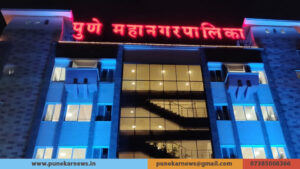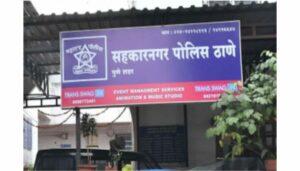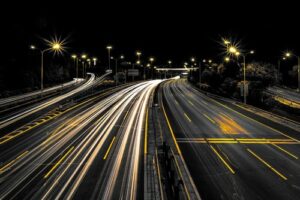‘The New DC Rules will bring Positive Development’
· Manoj Tatooskar, principal architect, A&T consultants discusses the new rules and regulations regarding the constructions in Pune
Pune, January 25: The newly introduced changes in the ‘Development Control Rules’ (DC) are historical and positive. These changes provide a clear graph of city’s development for the next five years, said Manoj Tatooskar, principal architect, A & T consultants.
He was talking at an event organized by A&T consultants at Pandit farms that was attended by many of the city’s esteemed personalities and businessmen. Vikas Achalkar from A & T consultants was also present on this occasion.
The main objective of the event was to address citizens’ doubts regarding the new DC rules. While explaining its various aspects, Tatooskar said, “The new rules will benefit the construction industry. They will also help in solving the problems of the under developed areas.”
While talking about the urban development, he further said, “For the faster development, we need to focus on the carrying capability of the roads. Thus, it has been decided that the 30 meter wide roads will get more FSI whereas; 6 meter wide roads will get less FSI. The Builders and developers might be unhappy with the decision, but, this seems to be the logical decision for city’s development.”
The new rules also consist of the norms regarding the redevelopment of buildings. If a 6 meter wide road does not have Transfer of Development Rights (TDR) and the constructions around it are more than 30 years old, then these constructions will get 20% more FSI for redevelopment. According to Ar. Tatooskar, there are clear rules made about the height of the buildings as well. We might even see more than 100-meter-tall buildings in the city.
“Set backs are necessary while building the skyscrapers. As the number of floors increase, more set backs can be taken. This relates to the structural norms and that is why the structure will be like a shape of the pyramid making it better and long-lasting. It will even make the building constructed in the earthquake prone area safer,” said Ar. Tatooskar.
The new rules also mention about multi-level parking systems. Such Parking places will now be 6 meter tall. This will provide parking facility to maximum people reducing the number of vehicles parked on the roads. “It’s hard to sell flats without the parking facility. It was a huge challenge to provide this facility as the norms were unclear. It has been solved with the new rules,” said Ar. Tatooskar.
The new rules also take care of conservation of nature. The constructions would be provided with the ‘Green Belt FSI’ under which it is mandatory to plant 100 trees per hector. The maintenance of the trees would be done by the builder or the society. “We can expect to see greenery alongside the river in the next five years. If the ‘Green Belt FSI’ is taken, then it would be necessary to plant 100 trees and take the completion as well as maintenance certificate,” informed Ar. Tatooskar.
While explaining the broader perspective behind forming the new rules, Tatooskar said, “The government aims at providing home to everyone till 2020. For that, we need to have clear rules. They need to be simple, easy and applicable in minimum time. The premium for lower income group houses should be minimum. Also, while not affecting the current life style, citizens should be given more facilities for which even more FSI is required. These are the different objectives we have in front of us.”
Ar. Tatooskar further said that the tax received from these developmental activities will be utilized for the development of ‘Metro Zone’. While elaborating on it, he further said, “The cost of the Metro is in multiple thousand crores. This money will come from the government and Municipal Corporation thereby from the pockets of the tax-paying ordinary people. If we do not want Metro to be a burden, then we need to facilitate development and create the premium for it from such projects.”
While explaining, the Transit Oriented Development (TOD) regarding the Metro, he said, “Pune is all set to become an international city in coming 10 years. If this dream is to be fulfilled, then the ‘TOD Zone’ (Increasing the FSI on the both sides of the Metro) must not be opposed. The whole world uses the concept of TOD.”
While talking about the Peth area of the city, Tatooskar mentioned that it occupies a major portion of the city. It is a very densely populated area. There are many narrow roads and dilapidated old constructions that are dangerous. This structure of the old city will now change with the new rules. With the purpose of redevelopment, ‘Wadas’ occupied by tenants have been given more FSI. The structure of the Peth area was ‘Low Rise, High Density’ till today. But now, with the changed rules, we can see skyscrapers there. Some of the rules for non-congested areas are applicable to this area. This will make it look more beautiful with the fundamental changes like more space, good ventilation, and increased greenery.
Ar. Tatooskar also stated that it is important to give newer facilities and services to the citizens during the development of the city. China has been using this method for a while. We need to implement it in India. He also stated that it is necessary to welcome new possibilities and concepts.





